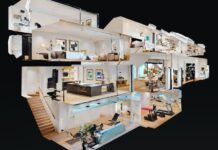the Moscow Department of cultural heritage approved the protection of the estate of P. I. Shchukin. It’s two houses built in neo-Russian style in the late XIX — early XX century, connected by a secret underground passage. Buildings are the objects of cultural heritage of Federal significance and is located at the address: Malaya Gruzinskaya street, house 15, structure 1, 2.
they were Originally built to house the extensive collection of merchant and collector of Russian antiquity Peter Ivanovich Shchukin. Although the projects took different architects, both houses resemble the towers. Now they State biological Museum named after K. A. Timiryazev.
He also noted that the object of protection has been recognized and an underground passage between buildings.
Probation house estate complex is divided into the old and the new Museum. The old Museum is in the depth of ownership (building 2). This two-story rectangular building with a hipped tile roof and corbel arches, cornices becausemy. The first floor is decorated with diamond rustication in imitation of masonry of stone with many facets. The facades are decorated with glazed tiles, ceramic ornament, stucco, brick arched recesses. And the new Museum (building 1), facing at Malaya Gruzinskaya. The house plays an important role in shaping the architectural and urban landscape not only this street, but also the entire quarter. This two-story building with corbels, turrets, hipped roofs with scallops. The facades of the building is also richly decorated with stucco and decorative elements (columnar frieze under the top cornice, twisted and smooth polyanki beads, stylized keystones).
Windows and doors of both houses are framed different types. Main porch as the old and the new Museum of brick and decorated with columns kubische unusual shape. All these elements are characteristic of the neo-Russian style in architecture, which was based on the traditions of ancient architecture and folk art.
Peter Ivanovich Shchukin — the largest collector of Russia in the second half of the XIX century merchant, philanthropist, hereditary honorary citizen, a valid state Councilor, and Creator of the private Museum of Russian antiquities.
as his Museum collection required the space to accommodate, in 1891 Shchukin bought a plot of land on Malaya Gruzinskaya street with two wooden houses. At his request the architect B. Freidenberg built the fairy tower, which would later be called the old Museum. In 1895 it was opened to public access, and the owner of the estate he gave explanations to their exhibits.
This collection became famous for its versatility: it was presented weapons, textiles, carpets, paintings, engravings, ornaments, utensils and jewellery. They emphasized bib��Iteca. The Museum worked on his works of famous artists of that time — Viktor Vasnetsov, Valentin Serov, Vasily Surikov.
Gradually the walls of the Museum were small for the growing congregation, and in 1898 by architect A. E. Arizona carried out the construction of the second building — the new Museum. At the same time, both buildings connected by an underground tunnel. The construction of the estate complex is completed only in 1905 the construction of the Museum warehouse. Then Peter Schukin donates his collection of land and real estate Historical Museum. The former owner until the end of life remained the curator of collections, deposits and published inventories of individual parts. In 1912, after the death of Peter Shchukin Museum ceased to exist, the collection gradually transported to the Historical Museum. Since 1934, the manor house became the administrative and exhibition buildings of the State biological Museum named after K. A. Timiryazev.















